William Herbert was a pioneer of the cinema scene in Newcastle. Born in the United States, he moved to Newcastle in 1907 and began showing the new ‘moving pictures’ at various locations in Newcastle. In October 1910 Herbert announced plans to screen films in the open air at the Hamilton Rugby League ground on the north side of Belford St. The first night was a disaster. “Owing to the boisterous nature of the weather the moving pictures could not be held as the screen was blown down in the afternoon.”
Despite the initial setback, Herbert persevered and regularly screened movies at the ground until 1912 when he opened a permanent theatre at the Nineways Broadmeadow. Seating 2000 people, the grandiosely named “No. 1 Picture Palace” was a basic structure with asphalt floor and canvas roof.
During 1923 and 1924, Herbert ingeniously managed the complete reconstruction of the building “without temporarily shutting down the theatre or seriously inconveniencing his patrons.” Corrugated iron walls were removed gradually and replaced with brick, steel girders installed, and the canvas roof replaced over a three-week period. “There were times when parts of the theatre had two coverings, but at every screening the audience was protected from the weather.”
A photograph of the new “Herbert’s Theatre De Luxe” can be dated by close inspection of the poster on the right-hand side. It advertises Gladys Walton in the silent film “The Girl Who Ran Wild” that screened in September 1923. Herbert sold the theatre in 1933 and in 1941 the new owners announced plans for its demolition and erection of a new building. At a cost of £40,000 and a seating capacity of 1600, the new “Century Theatre” opened in April 1942 and had its final screening in September 1973. The building lay derelict for a while and was then variously used as a truck repair workshop, gaming arcade, and finally as a church. Badly damaged in the 1989 earthquake the Century Theatre was demolished soon afterwards.
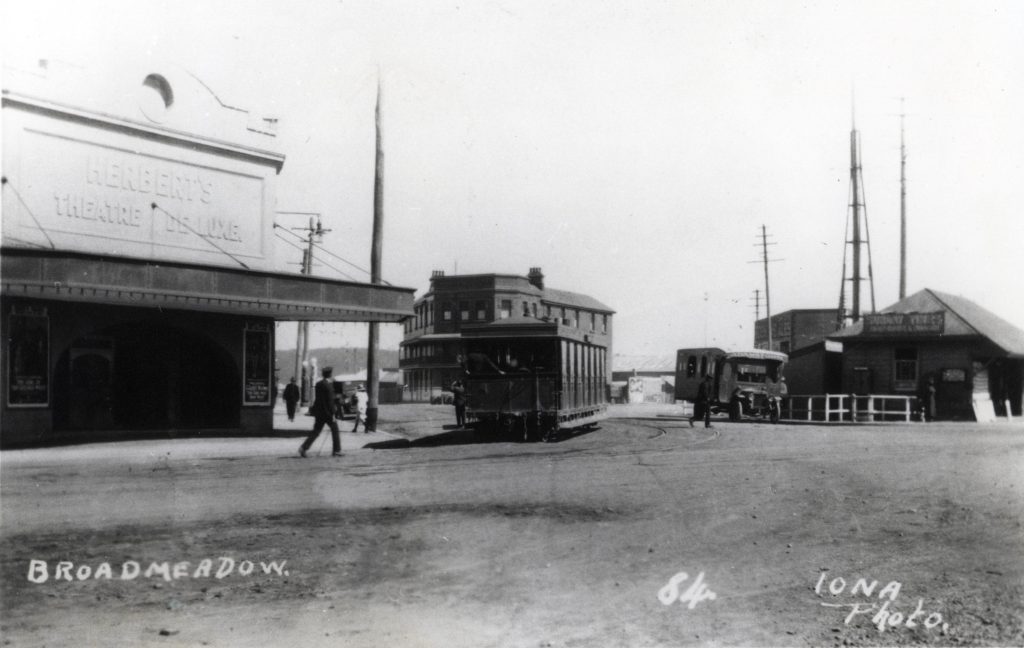
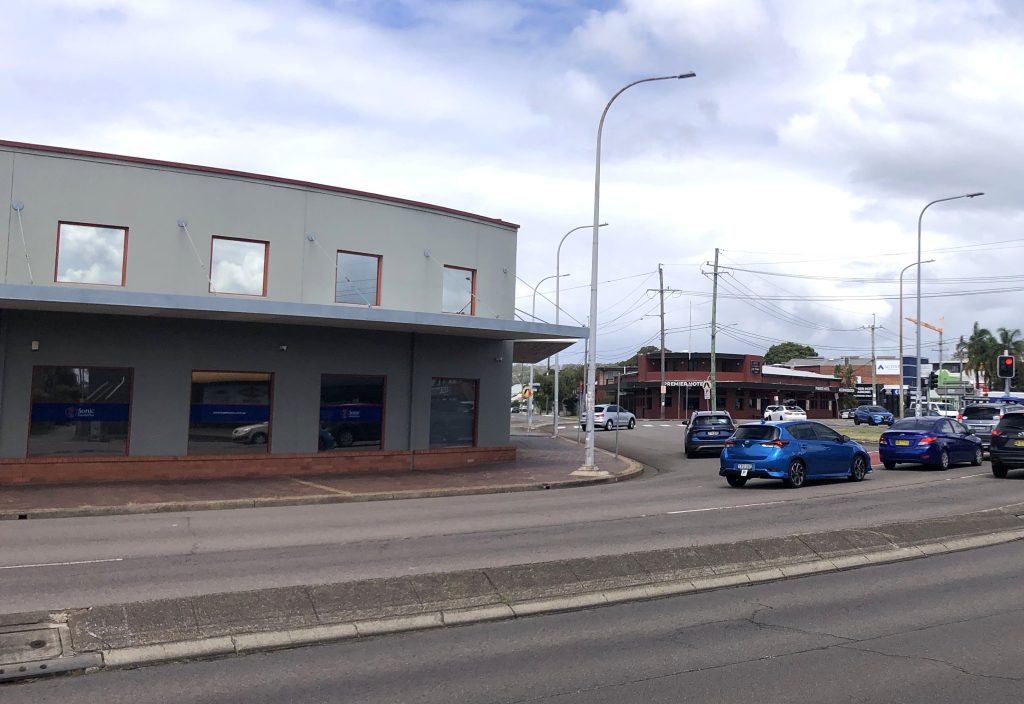
The article above was first published in the November 2023 edition of The Local.
Acknowledgements
Two useful sources of information for this article were Mike Scanlon’s 2019 newspaper article on Will Herbert, and the 1993 book “Front Stalls or Back? The History and Heritage of the Newcastle Theatres” by K J Cork and L R Tod.
Additional Information
Will Herbert – Early life and Career
According to a 1918 biographical article, Will Herbert was born in the town of Manchester, New Hampshire in the USA. Confusingly, an obituary in 1947 states that he “was born in New Hampshire, England, and was taken to America at the age of three” while another obituary states that he “was born in Lancashire”.
The kind of person he was is perhaps best illustrated in that he was an actual example of the cliche of running away from home to join the circus …
Mr. Herbert seems to have had a penchant for travelling, for at 16 – without his parents’ consent – he attached himself to Forepaw’s Circus, which at the time was second only in size and importance to the great Barnum and Bailey’s Circus.
Newcastle Morning Herald and Miners’ Advocate, 5 April 1918.
After touring with the circus for a couple of seasons, Herbert started a bakery business in Boston, bought into a French cafe in New York, went to San Francisco and became chief steward on a steam ship trading with the eastern Pacific. He then served as a commissariat officer on the troopship Naomi in the war between the United States and Spain, and then subsequently on a trans-Atlantic liner the General Grant, sent to the Philippines to quell an uprising.
It was while in the Philippines that Mr. Herbert conceived the idea of taking up motion pictures.
Newcastle Morning Herald and Miners’ Advocate, 5 April 1918
In 1905, Will Herbert was part of a syndicate that secured the rights to film and screen the Lightweight Championship boxing match between Jimmy Britt and Oscar “Battling’ Nelson, held at San Francisco on 9 September 1905.

Soon afterwards, Herbert headed to Australia to exhibit the film of the fight.
Mr. Herbert, of the syndicate which secured the moving pictures of the Britt-Nelson fight in America for the world’s light-weight championship, arrived from America by the Sierra for the purpose of exhibiting the pictures throughout Australasia. He will open the Queen’s-hall, Pitt-street, on Monday next for a season, and a holiday matinee will also be given. Popular prices will be charged. Over 18,000 people witnessed this contest, which was very exciting; and the film representing it is over a mile in length.
The Daily Telegraph, 11 November 1905
Over the next two years Herbert toured all parts of Australia and New Zealand, showing the film in rented halls and theatres. He made at least two visits to Newcastle, in November 1905 and again in February 1906.
Mr. Herbert said that on his first visit to Newcastle he had noticed the possibilities for the establishment of permanent pictures.
Newcastle Morning Herald and Miners’ Advocate, 5 April 1918
Herbert appears to have settled permanently in Newcastle sometime in late 1907 or early 1908. By February 1908 he is mentioned as the manager of “Kings American Picturescope”, screening films at the Victoria Theatre in Perkins Street. He then rented the “Central Hall” in May 1908 for a period of 18 weeks, and also screened films at the Newcastle Sports Ground.
Hamilton Rugby League Ground
Will Herbert first screened moving pictures in the Broadmeadow area in the open air at the Hamilton Rugby League Football Ground. The first scheduled show on 22 October 1910 was cancelled due to inclement weather, however within a few weeks the paper reported …
The fine picture entertainment given by Mr. Will Herbert at the Rugby League Ground, Hamilton, is apparently growing rapidly in popularity, judging from the increasingly large audiences. Last night the new programme was witnessed by a very large attendance.
Newcastle Morning Herald and Miners’ Advocate, 10 November 1910.
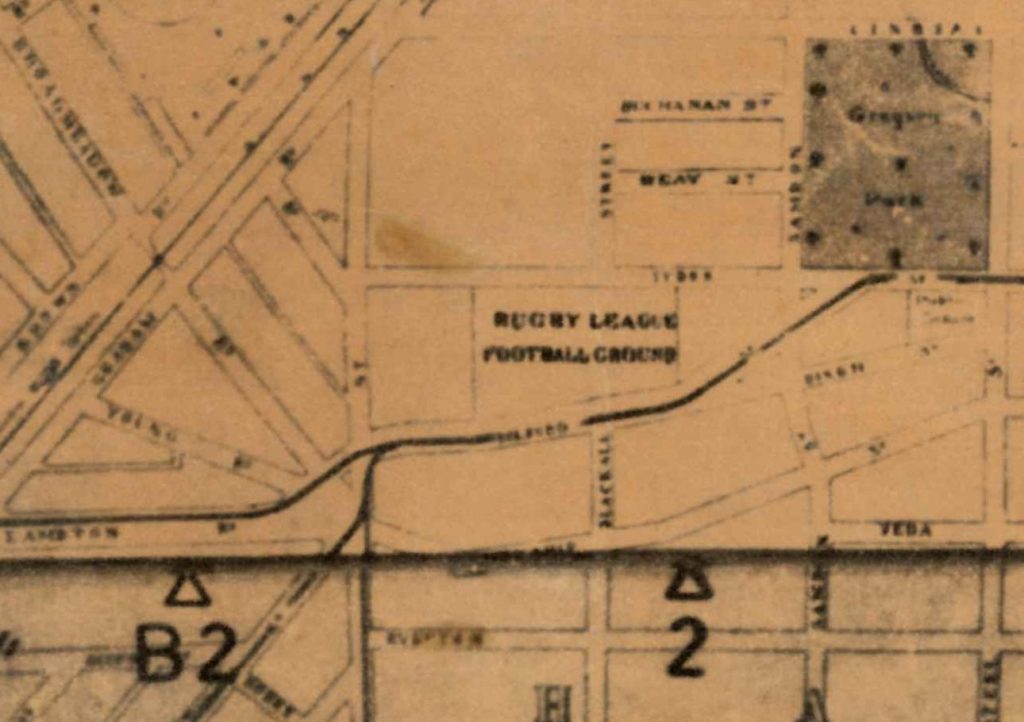

Will Herbert continued to regularly screen pictures at the ground until the final screening on Saturday 4 May 1912. The land occupied by the Rugby League Ground was later subdivided into 41 lots by the A. A. Company and sold in April 1918.
No. 1 Picture Palace
In August 1912, Will Herbert announced in a public advertisement his intention to open an “up-to-date Picture Palace” in Broadmeadow, capable of seating 2000 persons.
Herbert’s “No. 1 Picture Palace” at Broadmeadow opened on Saturday 2 November 1912, screening “Sweet Nell of Old Drury” starring Miss Nellie Stewart. A report on the opening noted that …
The attendance numbered just on 2000, and many were unable to gain admission. Extra seats were brought in, but these were not sufficient to accommodate those anxious to get in. The structure is a very commodious one, and commands an excellent position at the junction of the tram lines. The building measures 187ft by 85ft, and is admirably adapted for picture entertainment. The exterior was brilliantly illuminated for the opening performance. Three large stars and a Maltese cross formed of different coloured electric lights gave the outside a most picturesque appearance. The vestibule is attractively laid out, and the whole of the floor space of the building will shortly be asphalted. Patent spring back chairs are to be used for the higher-priced seats. The chairs already in use are very comfortable, and in every other respect patrons are well catered for.
Newcastle Morning Herald and Miners’ Advocate, 4 November 1912
By May 1913 further improvements to the theatre had been completed.
Herbert’s Picture Palace at Broadmeadow has now been completely roofed in with waterproof canvas, which will render it cosy and warm for the winter months.
Newcastle Morning Herald and Miners’ Advocate, 6 May 1913
Herbert’s Theatre De Luxe
Originally the photograph of Herbert’s Theatre De Luxe was loaded into the Living Histories site with no attributed date. Noting from the article of June 1924 that the construction/renovation of the theatre was “spread over fourteen months”, and also noting from the photo that the tramline to Adamstown up Brunker Road is not yet electrified (which was completed in January 1925), indicates that the photo was taken sometime in 1923 or 1924.
 Getting a more exact date on the photo relies on identifying the movie being exhibited at the time of the photo, by carefully examining the poster on the right hand side of the entrance.
Getting a more exact date on the photo relies on identifying the movie being exhibited at the time of the photo, by carefully examining the poster on the right hand side of the entrance.
Taking a snip of the photo and enhancing the contrast, you can just make out the name “Gladys Walton” and the name of the film as “The Girl Who Ran Wild”. Additionally, a faint outline of a seated girl can be made out that matches the profile of the movie poster below.
Searching newspaper advertisements in 1923 and 1924 reveals that the film was screening at Herbert’s Broadmeadow Theatre in the week beginning Monday 17 September 1923.
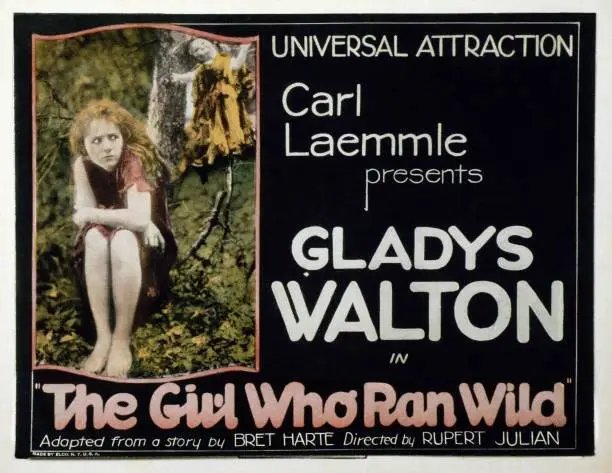

According to Cork and Tod’s book “Front Stalls or Back?”, Herbert divested control of his theatres to Newcastle Theatres Pty Ltd in 1933. Herbert retired in 1935 and visited the United States. A year later in January 1936 the directors of the Newcastle Theatres induced Herbert to take on the supervision of their theatres, including the De Luxe at Broadmeadow, Roxy at Hamilton, and Regent at Islington.
William Herbert retired again in 1941, and died on 11 November 1947 in Hamilton, at the age of 80.
Century Theatre
A start will be made on Monday on the new modern theatre at Broadmeadow. With equipment and furnishings the expenditure will exceed £30,000. The contract is the biggest announced in northern New South Wales this year. The building will occupy a splendid central site, with frontages to Chatham road and the Pacific Highway. To enable operations to proceed, it will be necessary to demolish the present theatre and other buildings erected by Mr. W. Herbert, founder of Herbert’s Theatres, 25 years ago.
Newcastle Morning Herald and Miners’ Advocate, 19 April 1941
The new Century Theatre opened on Friday 17 April 1942 with a screening of the Technicolor film “Aloma of the South Seas” starring Dorothy Lamour.
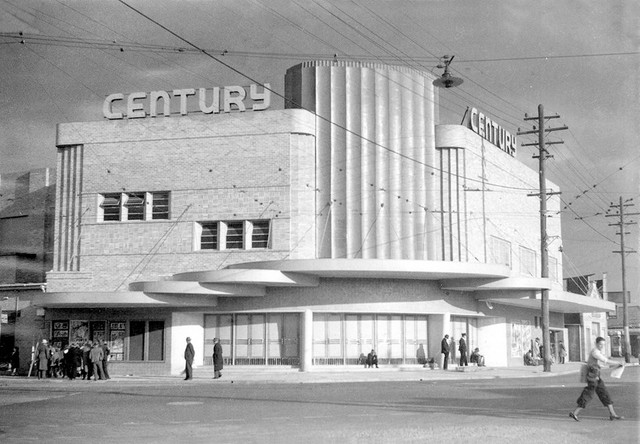
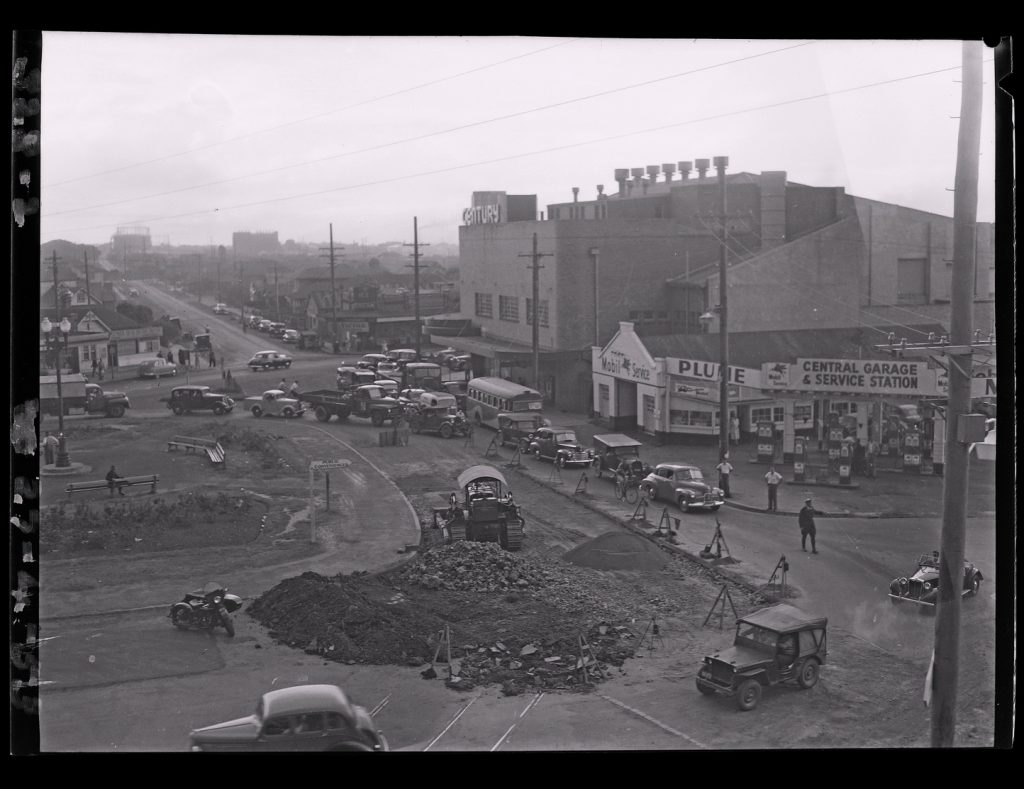
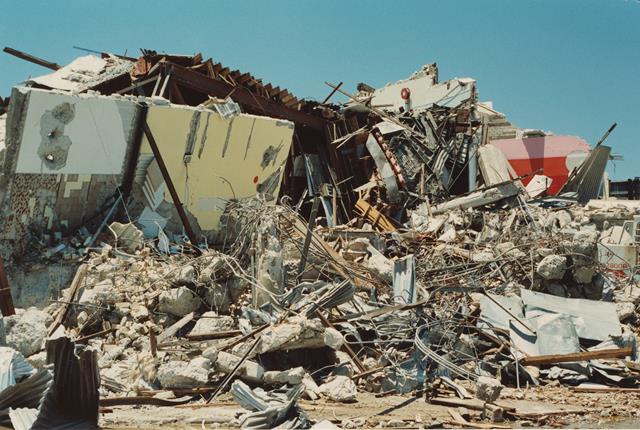
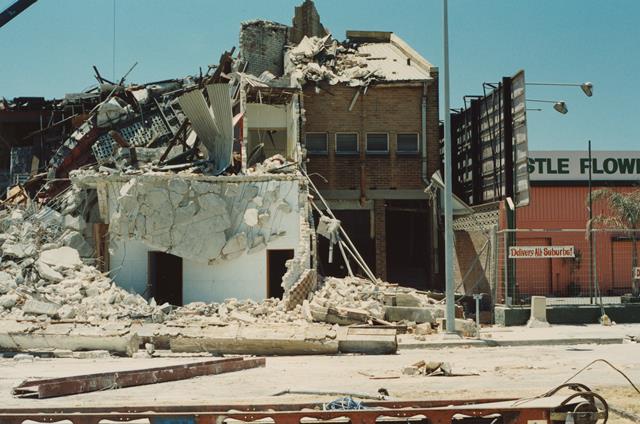
Newspaper articles
| Article Date Event Date | Notes |
|---|---|
| 11 Nov 1905 | "Mr. Herbert, of the syndicate which secured the moving pictures of the Britt-Nelson fight in America for the world's light-weight championship, arrived from America by the Sierra for the purpose of exhibiting the pictures throughout Australasia." |
| 27 Nov 1905 25 Nov 1905 | "At the King's Hall on Saturday evening, Mr. Will Herbert introduced to Newcastle the celebrated motion pictures of the Britt-Nelson contest for the lightweight boxing championship of the world." |
| 23 Feb 1906 | "Under the direction of Mr. W. Herbert" … return showing in Newcastle of the Britt-Nelson fight. |
| 20 Feb 1908 | Will Herbert, manager of King’s American Picturescope Company. |
| 4 Jul 1908 | Mr Herbert mentioned as the manager of Kings Picturescope Palace, in Newcomen Street, Newcastle. |
| 11 Jul 1908 | "The attendances at the Picturescope Palace, Newcomen-street, during the week, have been well up to the average, and Mr. Herbert, the manager, expresses himself well satisfied with the support that has so far been accorded his efforts to establish a permanent picture show in Newcastle." |
| 22 Oct 1910 | "Mr. Will Herbert, formerly of the Picturescope Palace, Newcastle, announces that the first of a series of a continentals will be given under his direction at the Rugby League Ground, Hamilton, this evening." |
| 24 Oct 1910 22 Oct 1910 | "Owing to the boisterous nature of the weather on Saturday, the continental and moving pictures, promoted by Mr. Will Herbert, on the League Football Ground, at Hamilton, could not be held. The screen was blown down in the afternoon, and at night there was no attendance of the public." |
| 10 Nov 1910 | "The fine picture entertainment given by Mr. Will Herbert at the Rugby League Ground, Hamilton, is apparently growing rapidly in popularity, judging from the increasingly large audiences." |
| 4 May 1912 | Herbert's final screening at the Rugby League Ground at Hamilton. |
| 2 Nov 1912 | "Mr. W. W. Herbert announces that he will open his No. 1 Picture Palace at Broadmeadow this evening." |
| 6 May 1913 | Herbert's Picture Palace at Broadmeadow has now been completely roofed in with waterproof canvas, which will render it cosy and warm for the winter months. |
| 5 Apr 1918 | Detailed biographical article on Will Herbert. |
| 15 Sep 1923 | "The Girl Who Ran Wild, the Universal attraction starring Gladys Walton, which will be screened at the Lyric and Herbert's Theatres, Broadmeadow and Islington, on Monday next, is the latest and most appealing screen version of Bret Hart's story M'liss." |
| 19 Sep 1923 | At the Lyric and Herbert's Pictures to-day there will be shown for the last time the Paramount special entitled "The Rustle of Silk," with Betty Compson in the lead. Gladys Walton is also seen in "The Girl who Ran Wild." |
| 11 Jun 1924 | Long article detailing "the conversion of Herbert's Broadmeadow Theatre from an unprepossesssing building to one of the most modern picture exhibition houses in Australia." |
| 4 Jan 1936 | "At the request of the Directors of Newcastle Theatres Ltd., Mr. William Herbert has resumed the supervision of the circuit embracing the De Luxe (Broadmeadow), Roxy (Hamilton), and Regent (Islington), Theatres." |
| 19 Apr 1941 | "A start will be made on Monday on the new modern theatre at Broadmeadow. With equipment and furnishings the expenditure will exceed £30,000. To enable operations to proceed, it will be necessary to demolish the present theatre and other buildings erected by Mr. W. Herbert, founder of Herbert's Theatres, 25 years ago. " |
| 16 Apr 1942 17 Apr 1942 | "Another fine addition to the architectural grandeur of the Newcastle district is the new Century Theatre at Broadmeadow. Erected at a cost of over £40,000, and with a seating accommodation of over 1600, the theatre will-be opened officially on Friday night, at 7.45 o'clock" |
| 18 Apr 1942 17 Apr 1942 | Opening of the Century Theatre, Broadmeadow. |
| 11 Nov 1947 | Death of Will Herbert, aged 80 years and 11 months. (Newcastle Sun) |
| 11 Nov 1947 | Death of Will Herbert (Newcastle Morning Herald, but some of the details contradict the Newcastle Sun obituary.) |

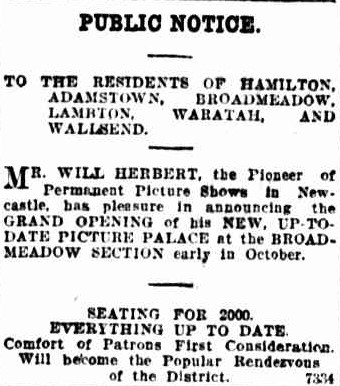
I’ve just read your article in issue 115 of The Local on Herbert’s De Luxe Theatre, Broadmeadow. Fantastic revelations about the Hamilton Rugby League Ground. I have been searching for the exact location of this ground where, so I believe, the first Newcastle Rugby League final was played in 1910 between Central and South in front of 2500 spectators. Thank you so much for publishing this information.